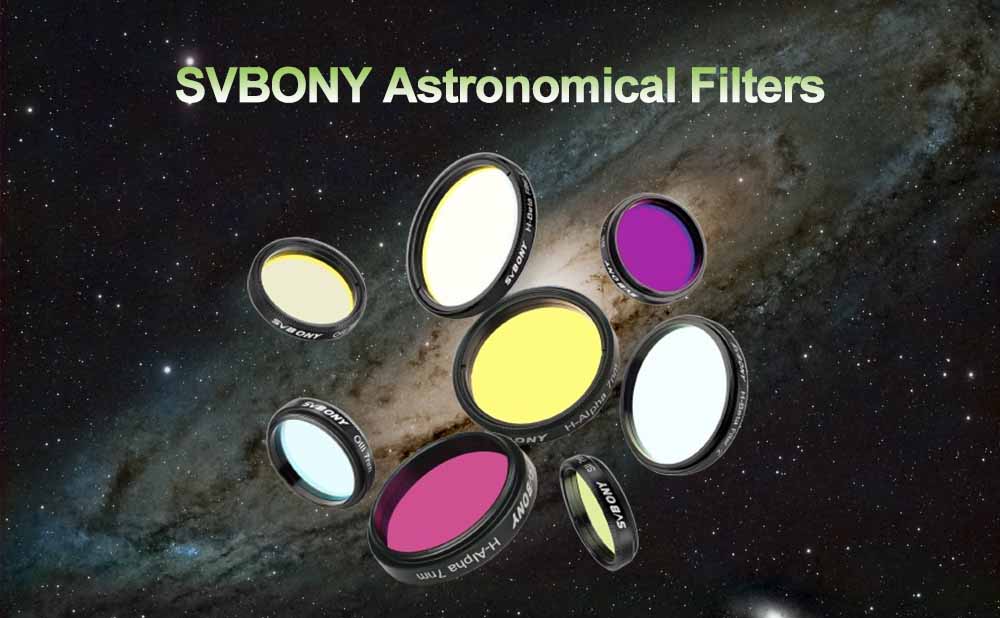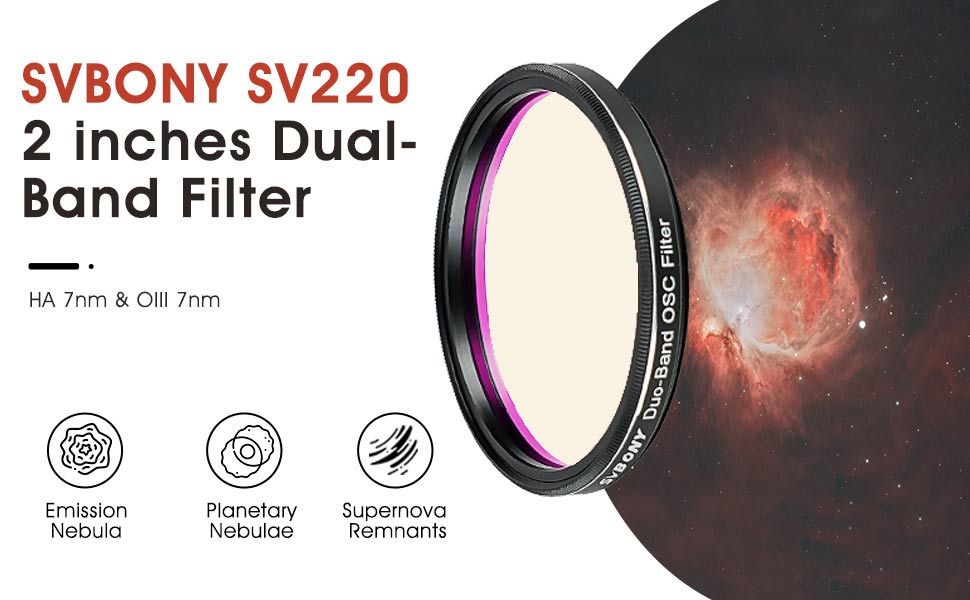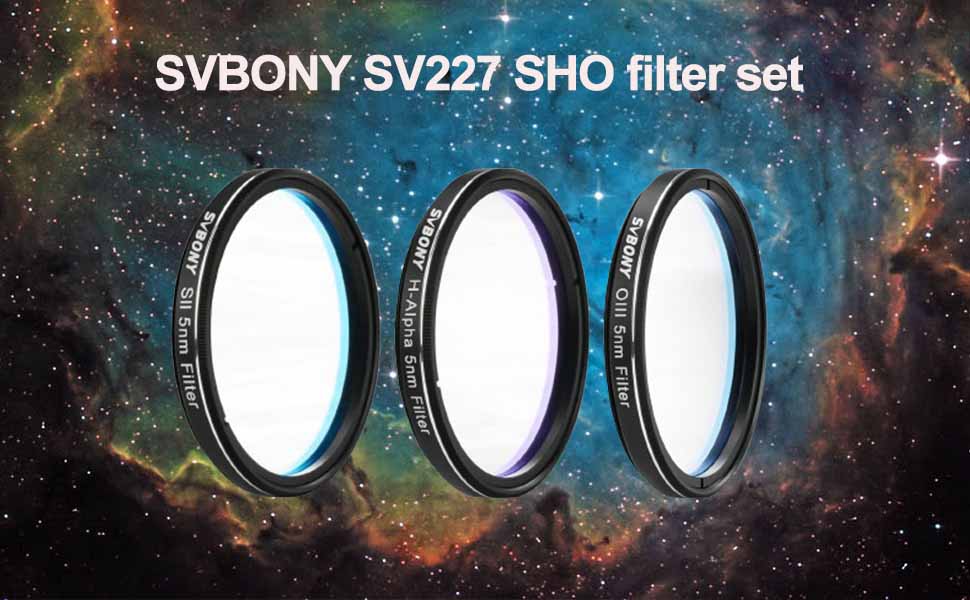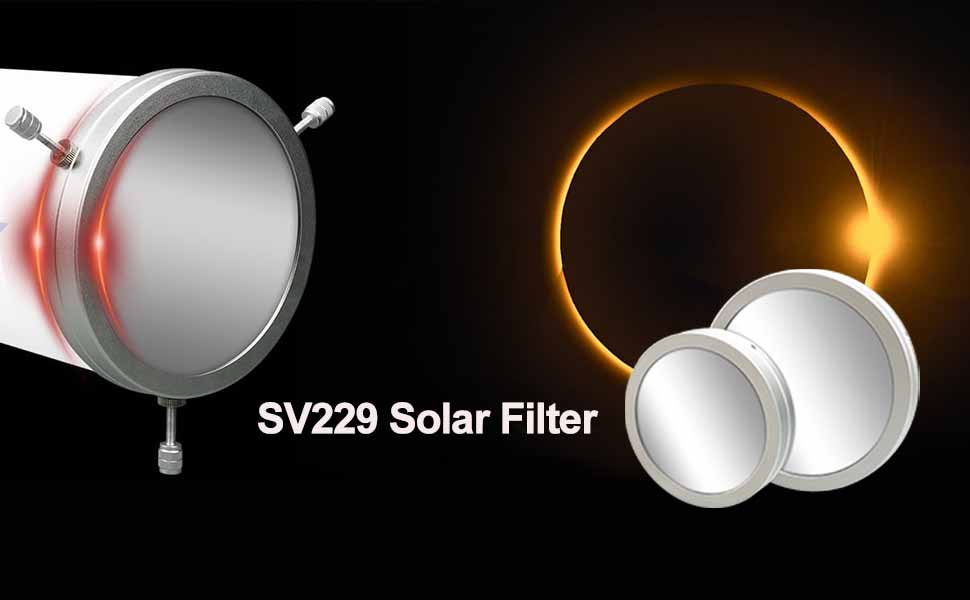Astronomical Filters are an Essential for Amateur Astronomers

Astronomical Filters are an Essential for Amateur Astronomers
Backyard observers often desire to maximize both detail and the number of objects observed, but these goals typically conflict and cannot be simultaneously achieved. To see a wide range of objects, a large telescope is needed to gather ample light and reveal the faint wonders of the night sky. On the other hand, capturing fine details requires high contrast, enabling the separation of an object or region from its surroundings.
Astronomical filters are the preferred method to enhance contrast. These filters work by selectively transmitting light at certain wavelengths while blocking others. There are three main types of telescope filters: nebula filters for deep-sky observation, planetary filters, and solar filters. It's important to note that astronomy filters reduce the amount of light passing through the telescope, resulting in dimmer overall images. However, for specific objects, the improvement in contrast can be significant.
Nebula filters
Most deep-sky observers swear by nebula filters, which are designed to transmit emissions from nebulae while absorbing artificial light. Nebula filters have been a true blessing in the face of light pollution from neighboring cities, towns, and even nearby neighbors that disrupts our view of the night sky. They have provided immense relief by mitigating the adverse effects caused by light pollution.
-
Broadband filters allow the most light to pass through and block the least. They transmit over 90% of green light in a wavelength range of approximately 40 to 90nm. While they don't increase contrast as much as narrowband filters, they still provide a darker background sky that enhances the view of most objects, especially emission nebulae, in moderately light-polluted areas.
-
Narrowband filters are more selective. They increase contrast by only allowing specific light wavelengths corresponding to certain spectral lines through. For example, hydrogen (H-a, 656nm), oxygen (OIII, 501nm), sulphur (SII, 672nm), etc. The filters can always be used for photography, even when the Moon is in the sky, or as filters for light pollution in the city. Exposure time plays no role here - long-exposure photography can also be undertaken.
-
The H-beta filter exclusively transmits hydrogen-beta emission. It is commonly known as the “Horsehead filter” due to its ability to reveal the elusive Horsehead Nebula in Orion, even under moderate light pollution. It also works well for the California Nebula in Perseus but has limited usefulness for other objects. In most cases, an OIII filter is a better choice.
Planetary Filters
Color filters are particularly useful for Mars, Jupiter, and Saturn. For Mars, a red filter (W25) enhances subtle differences on its surface but may not work as well with smaller telescopes. A green filter (W58) brings out frost patches and surface fogs while darkening red and blue features. A blue filter (W80) reveals atmospheric clouds, limb hazes, and polar hoods. Switching between an orange or red filter and a blue filter can aid in detecting martian dust clouds or storms.
When observing Jupiter without a filter, only the two dark equatorial belts may stand out. Adding a green (W58) or blue (W80) filter allows you to observe additional bands. A yellow (W15) filter highlights delicate loops and blue festoons near the edges of the dark belts. Saturn's atmosphere displays similar banding to Jupiter, and the same filters work well for this planet too, although the banding is more subtle.
Solar filters
Although solar filters operate on the same principle as nebula and planetary filters, their goal is different. With one notable exception, instead of enhancing certain features on the Sun’s surface, solar eclipse filters seek to diminish the total light coming from the Sun. The Sun shines so brightly that looking at it with the naked eye for more than a second can cause damage. Viewing it with any optical aid for even a fraction of a second risks permanent eye damage.
Conclusion
Backyard observers face a trade-off between observing a variety of objects and capturing fine details. Filters offer a solution to boost contrast, but they also diminish the brightness of the image. By understanding the different types of astronomical filters available and their impact on image quality, observers can optimize their viewing experiences and explore the vast wonders of the night sky.











